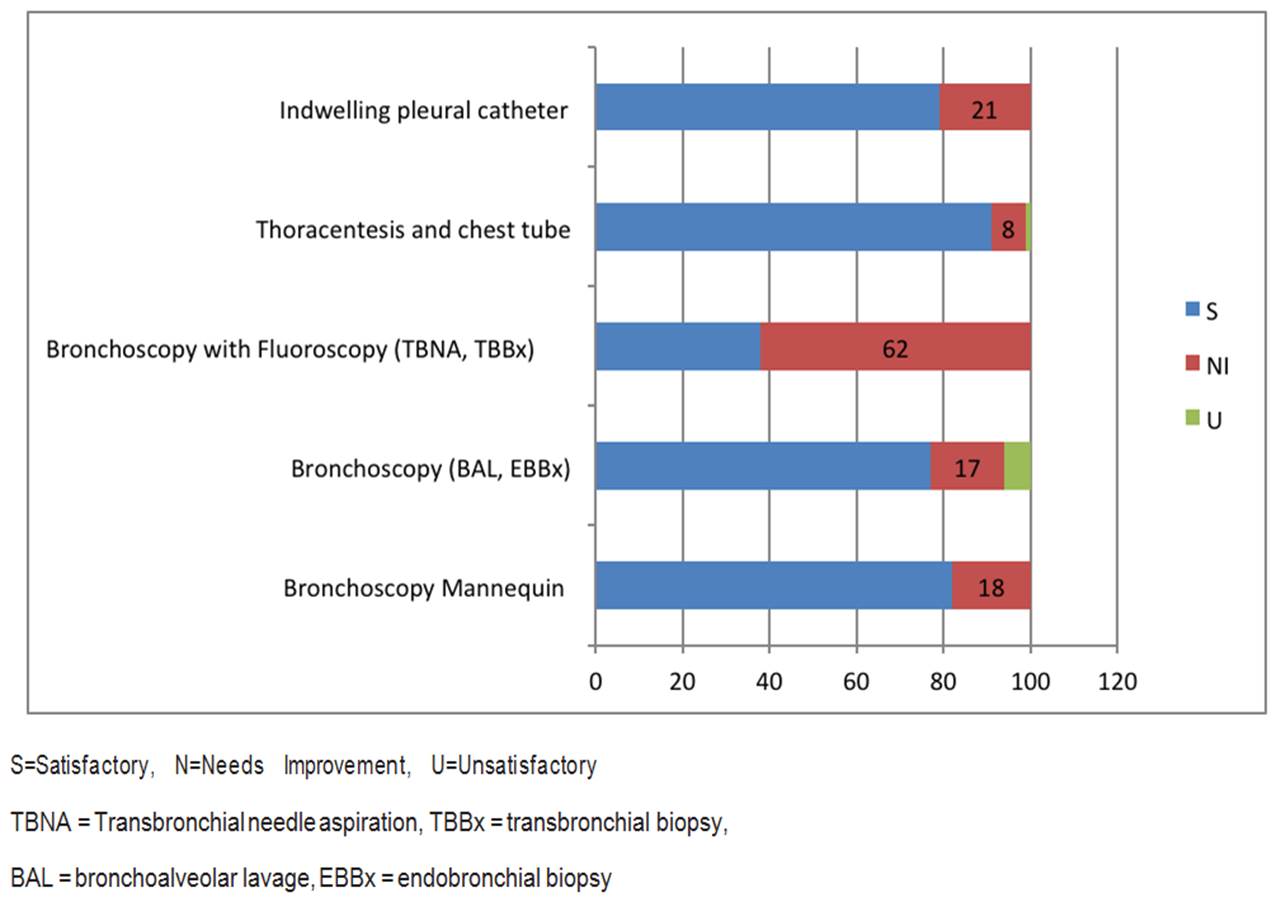The University of Texas at MD Anderson Cancer Center
Houston, TX
Program Director: Saadia A. Faiz, MD
Program Type: Pulmonary and Critical Care Medicine
Abstract Authors: Sujith V. Cherian, George A. Eapen, Rosa Estrada-y-Martin, Mark Warner, Carlos A. Jimenez, Bela Patel, Lara Bashoura, Amit D. Parulekar, MD, Donald R. Lazarus, MD, Roberto F. Casal, MD, Saadia A. Faiz, MD
BACKGROUND
Pulmonary & Critical Care Medicine is a procedurally oriented subspecialty that typically deals with acutely ill patients. In addition to expanding their medical knowledge base, new fellows are expected to quickly adapt to a new environment as well as unfamiliar technology and procedures. Most fellows are expected to start functioning competently and efficiently within days of starting their fellowships. Although close attending supervision may be present, many procedures are typically learned on the job and on human subjects. This naturally creates anxiety for the fellow, places a training burden on patients and may potentially impact patient comfort and safety. Consequently there is a growing impetus for fellowship programs to not only orient their trainees to the new environment but also provide them with basic training in these new procedural skills prior to patient exposure. There are multiple different approaches to procedural training, which may include didactic lectures, various forms of simulation and animal lab training. The goal of such training is obviously not to generate expertise, but rather to familiarize the trainee with the procedural equipment and techniques and possibly reduce the stress levels of the trainee as they start their clinical training. Therefore, we sought to create a regional introductory one day course to familiarize incoming trainees with the procedural aspects of Pulmonary and Critical Care Medicine.
METHODS
Instructional methods included a didactic portion and in vivo wet lab stations with porcine models. The course site was the University of Texas MD Anderson Cancer Center (MDACC), and the participants included primarily first year fellows from the University of Texas at Houston Health Science Center (UTHSC), Baylor College of Medicine (BCM), and the University of Texas Medical Branch at Galveston. The instructors were attending physicians from MDACC, UTHSC and BCM.
The didactic portion started with a pre-test, followed by concise lectures and post-test. The pre-test and post-test both consisted of 12 multiple choice questions distributed between procedural aspects of sedation, bronchoscopy and pleural interventions. Lectures were focused on procedural indications and contraindications, techniques, complications and management. The topics included the following: pleural procedures, anatomy of the mediastinum and tracheobronchial tree, moderate sedation and topical anesthesia, basic diagnostic bronchoscopic procedures such as bronchoalveolar lavage (BAL), endobronchial biopsy(EBBx), transbronchial needle aspiration(TBNA), and transbronchial biopsy(TBBx), bronchoscopy in special situations (mechanical ventilation, difficult airway), and advanced diagnostic bronchoscopy (electromagnetic navigation and endobronchial ultrasound).
The hands on portion included 4 stations with small groups (2 to 4 trainees) with one attending instructor per station. An hour was allotted at each station. The stations included: basic bronchoscopy (split between a mannequin model for tracheobronchial anatomy and a porcine model for BAL and EBBx), basic bronchoscopy with fluoroscopy for TBBx and TBNA, common pleural procedures (thoracentesis and chest tube) and indwelling pleural catheters. Group size was limited in order to maximize interaction and individual time at each station. The fellows were given formal goals and objectives for each station and tested on the objectives at the end of each session and graded as satisfactory, needs improvement or unsatisfactory by the instructor at the end of each station. Feedback from the trainees was also obtained immediately after each station to assess if the instructor was knowledgeable on the subject matter, if the instructor encouraged and answered questions, if the session content met educational goals, and if adequate time was allotted for the session.
RESULTS
Over a three year period, 38 fellows participated in the course (Table 1). With the exception of thoracentesis, only a minority of the trainees had done any of the procedures prior to attending the course. Prior to fellowship, a few had attended a formal procedure course with 11% for airway endoscopy and 5% for pleural procedures.
The average score on the pre-test was 66% (range 33 to 100) and the post-test was 86% (range 58 to 100). The majority of fellows did better on the post-test (66%), but there was no difference in 26%and 8% did worse.
For the skills portion of the course, most trainees performed well at all stations except the bronchoscopy with fluoroscopy station (TBBx and TBNA) for which the majority needed improvement (Figure 1). Common pleural procedures and the bronchoscopy mannequin station were mastered more easily that the porcine model for bronchoscopy and indwelling pleural catheter.
Feedback obtained from the trainees after the course was overwhelming positive, and in each category they reported that it exceeded their expectations. Majority of the fellow also indicated that their comfort and confidence with pulmonary procedures increased following course completion.
CONCLUSIONS
Familiarization with basic pulmonary procedures can be achieved with a single day immersion introductory course. A combination of didactic, simulation and in vivo training may be required as these different techniques are complementary and provide additive value. Formal goals and objectives for the training as well as knowledge and skills assessment tools should be utilized to achieve optimal outcomes. Self-reported trainee confidence and comfort was improved with the training and knowledge based testing also demonstrated improvement. The institution of a short, goal oriented introductory procedures course can have significant impact reducing the training burden on patients and possibly improve patient safety and quality of care.
Figure 1 Average score on skills station




